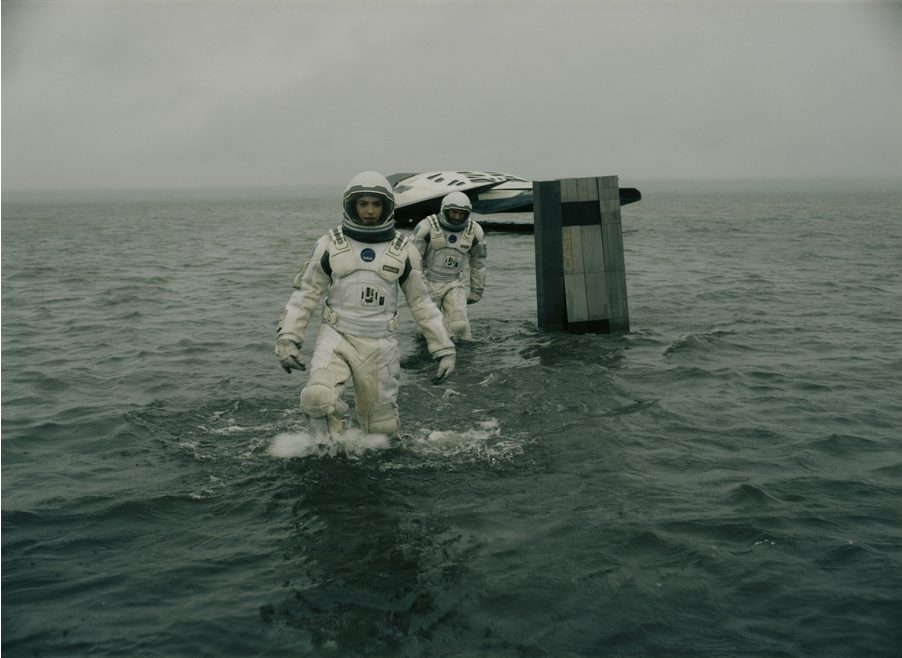The Future of Hollywood in Outer Space

Movies set in outer space have been popular for decades, captivating audiences with thrilling stories and stunning visuals. Classics like “2001: A Space Odyssey” and “Barbarella” paved the way for more recent blockbusters like “Interstellar” and “Gravity.” However, filming in space has always been a challenge, leading directors to rely on computer-generated imagery to recreate spaceships and parabolic flights to simulate zero gravity.
Filming in Low-Earth Orbit Becomes Feasible
But now, with the growth of the commercial space industry and the development of next-generation space stations, the prospect of filming in low-Earth orbit is becoming more feasible. As the cost of rocket launches continues to decrease, producers are envisioning dramas, sporting events, and reality television shows that could involve actual footage from space.
Allison Dollar, co-founder and executive producer of the Space Tourism Conference, believes that the possibilities are endless. With the commercial space business expanding rapidly, the next step is to establish the necessary infrastructure that would allow multiple people to engage in activities like filming off-world.
Space-Based Productions
While filming in space may seem new, there have been previous ventures in space-based production. In 1984, the Russian film “Return from Orbit” featured cosmonauts doubling as actors and included shots filmed on a Soviet-era Salyut space station. In 2013, Canadian astronaut Chris Hadfield filmed a music video aboard the International Space Station (ISS) for his cover of David Bowie’s “Space Oddity,” showcasing the creative potential of being in space.
Space Tourism’s Contribution
Space tourists have also contributed to space filmmaking. In 2008, game developer Richard Garriott paid $30 million for a ride on Russia’s Soyuz rocket and filmed a comedy short film called “Apogee of Fear” during his visit to the ISS. This was considered the first science fiction production made in space and was covered in the documentary “Man on a Mission” in 2010.
The Evolution of Space Films
As the commercial space race and space tourism take off, space films are becoming more professional. Streaming services like Netflix now offer space-focused documentaries, such as “Return to Space,” which chronicles SpaceX’s mission to carry American astronauts to the ISS. The film features interviews and footage of the astronauts before takeoff, as well as shots captured aboard the spacecraft through pre-installed cameras. Additionally, the 2021 docuseries “Countdown: Inspiration4 Mission to Space” follows the three-day journey of the first all-civilian crew to travel to low-Earth orbit.
The future of Hollywood in space is exciting and full of potential. With advancements in technology and the increasing accessibility of space travel, we can expect to see even more captivating and immersive films set in the depths of the cosmos in the coming years.
Creating Space-Based Dramas
Professional production teams were responsible for filming the pre- and post-launch scenes of space-based dramas. However, some footage on the station was captured by the amateur crew themselves. For example, a planned production called Helios, set in the future, relied on the space industry for assistance. Although they did not film actors in low-Earth orbit, the Helios team sought advice from an American astronaut and featured a United Launch Vulcan rocket in the movie. The film also collaborated with private space company Blue Origin, using a simulation of its Orbital Reef space station as a model. The Orbital Reef space station is one of several stations that received potential funding from NASA to replace the International Space Station (ISS) in the future. Patricia Beninati, a producer and co-writer of the film, mentioned that partnering with major space companies allows them to portray an accurate depiction of the year 2030 in the movie.
Space-Based Reality Television and Sports
The next phase of space entertainment may include reality television shows like “Space Hero” and “Who Wants to Be an Astronaut.” These shows aim to offer contestants the opportunity to travel to space, with the winner’s journey being broadcasted as the finale. Some have even proposed the idea of live-streaming space-based sports like space dodgeball. Commercial space companies, such as Blue Origin and Nanoracks, are preparing to collaborate with the media and entertainment industry. Nanoracks has already delivered a 360-degree camera into orbit to film a virtual reality project called “Space Explorers: The ISS Experience.” Axiom Space, building a space station that will attach to the ISS, plans to create an “inflatable microgravity media venue,” serving as an entertainment and content studio. A British company named Space Entertainment Enterprise is also working with Axiom and Tom Cruise on filming an upcoming movie on that station.
These projects highlight the emergence of new opportunities in the space industry, with low-Earth orbit becoming increasingly commercialized. While NASA has never been interested in stunts and showbiz, Dollar, a commentator, suggests that Hollywood may find its place in space.
Also Read:






